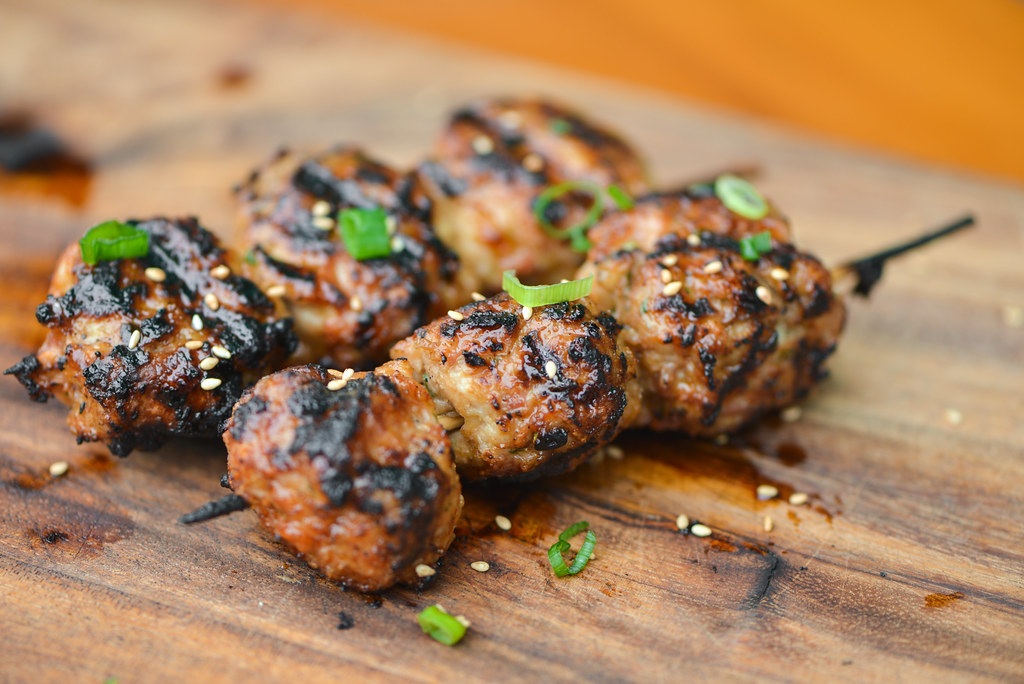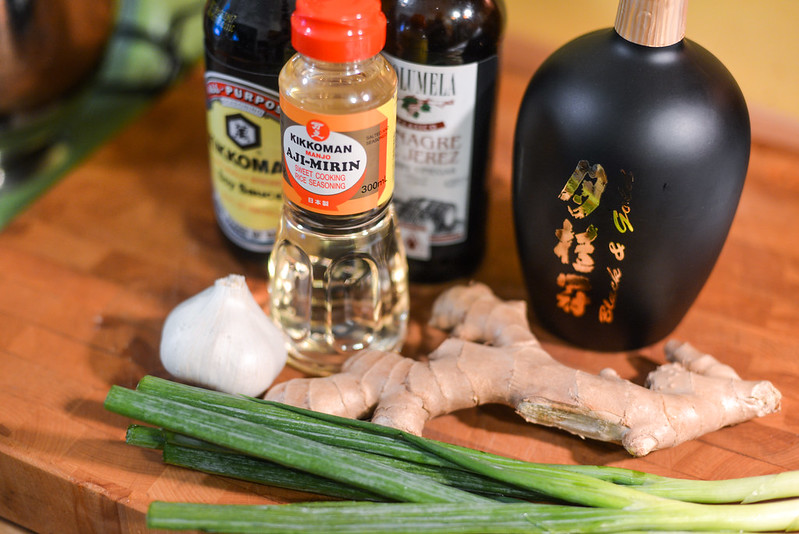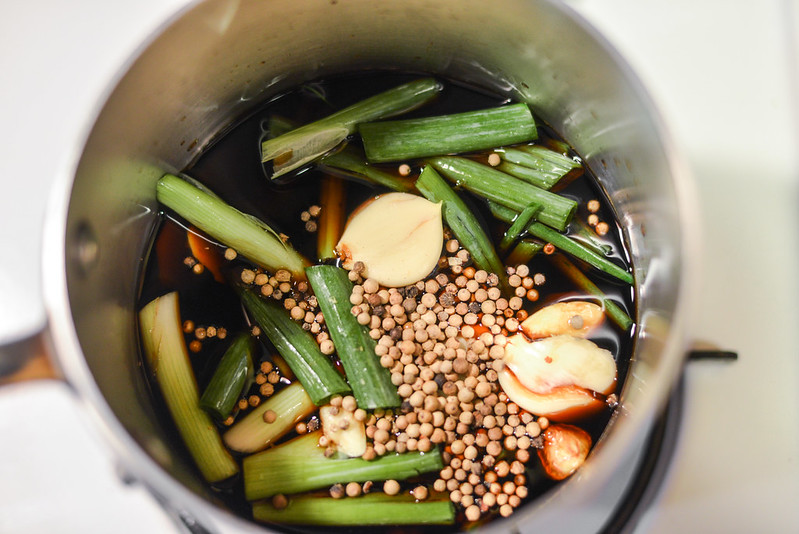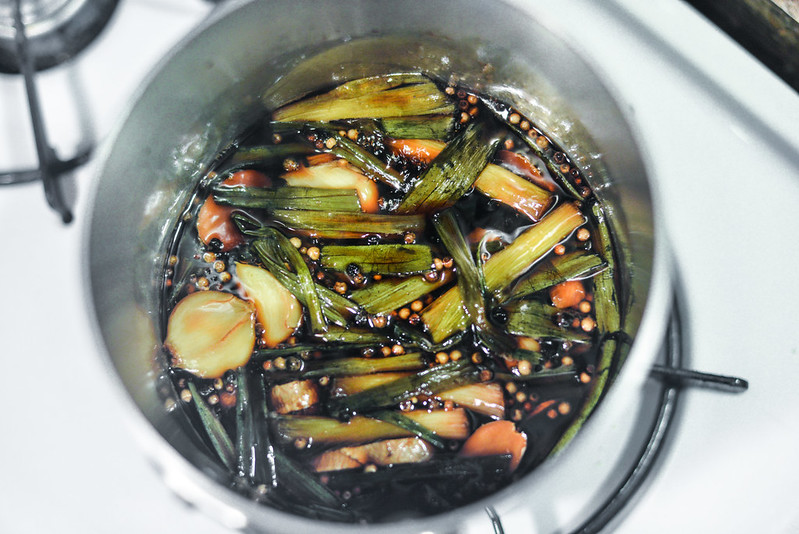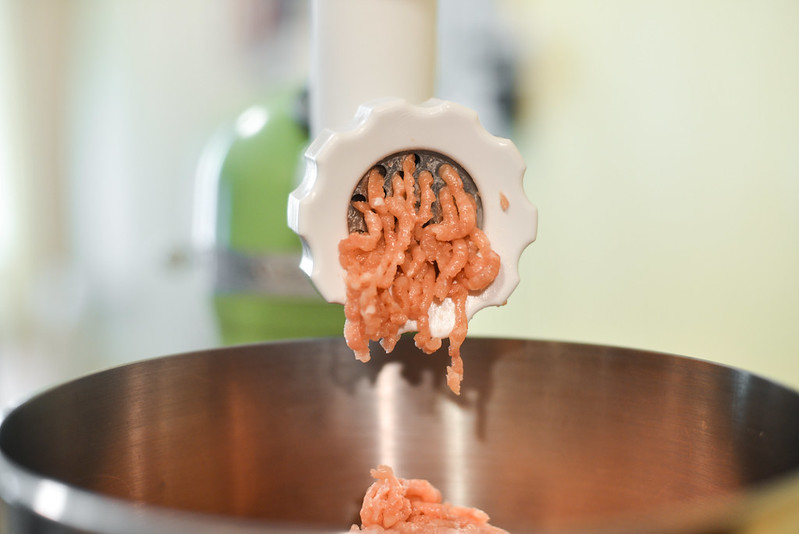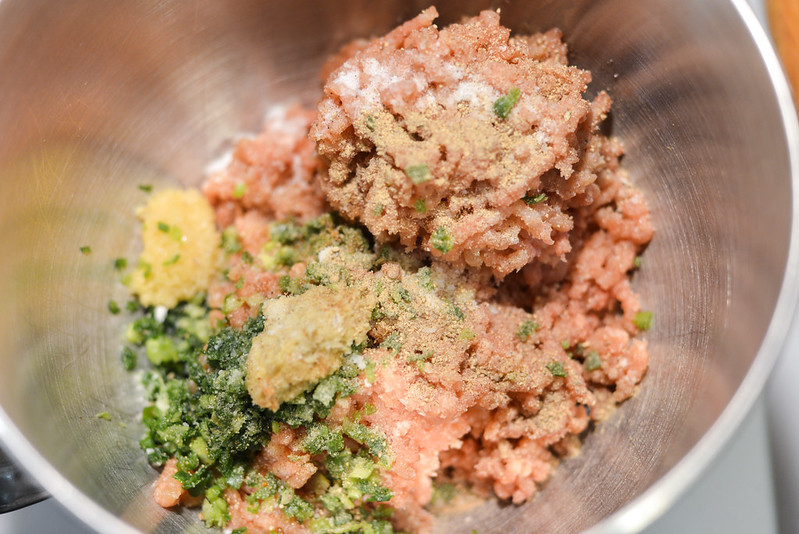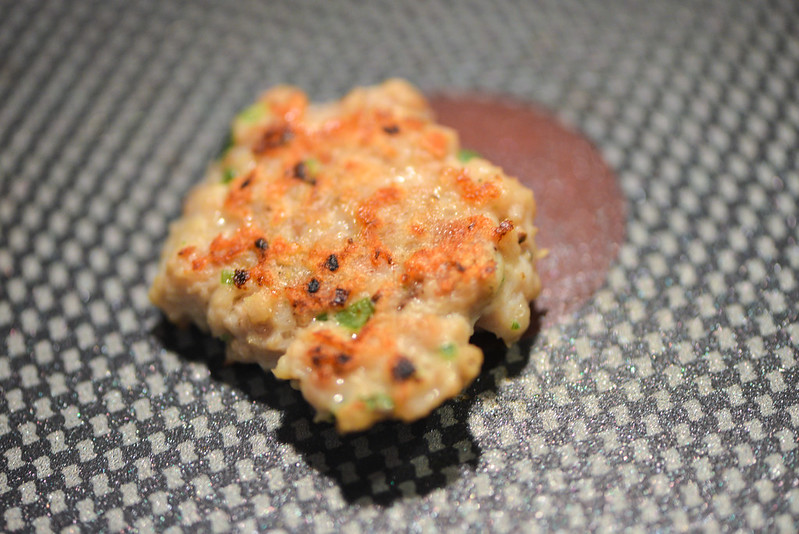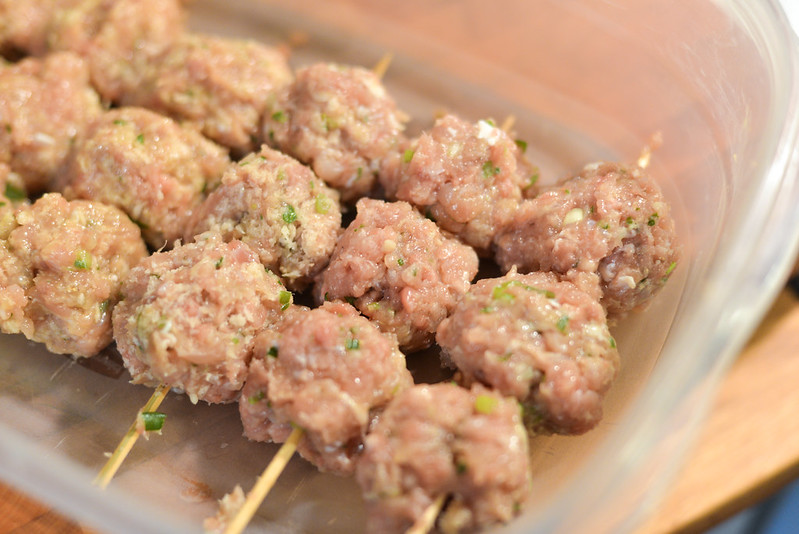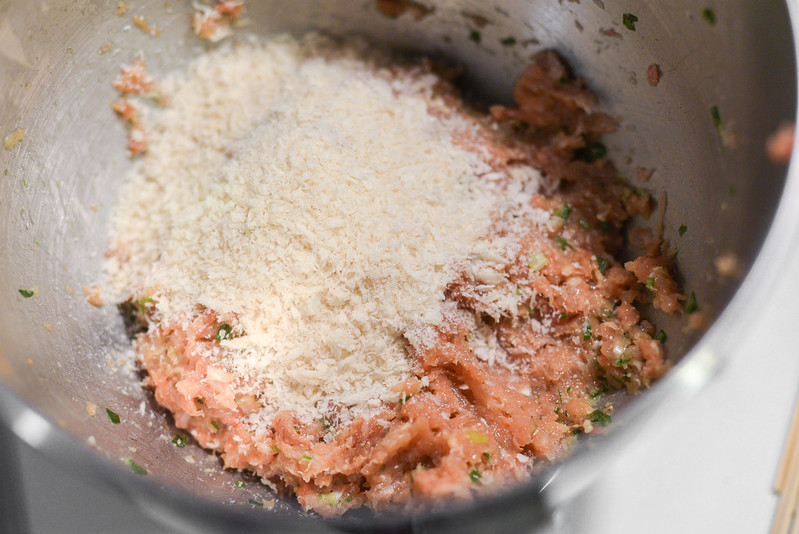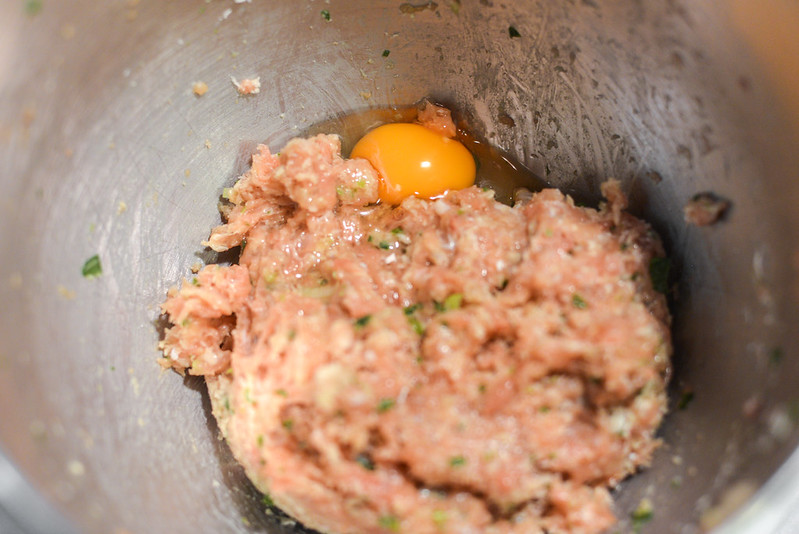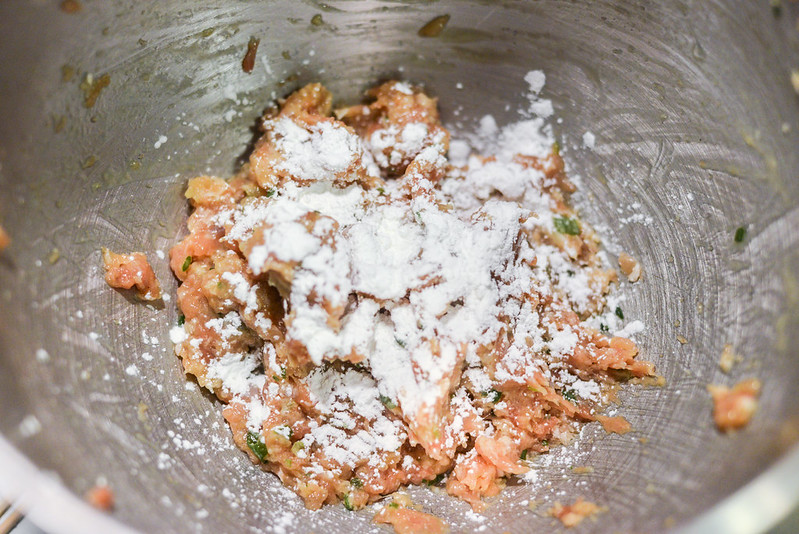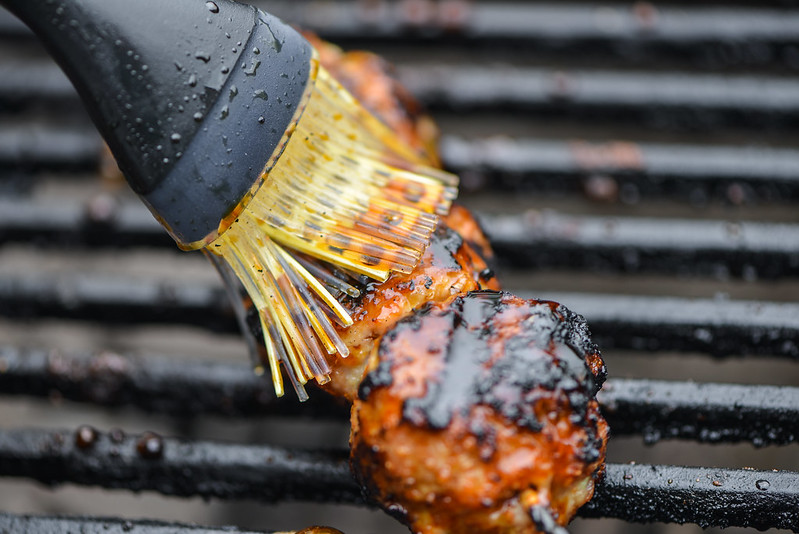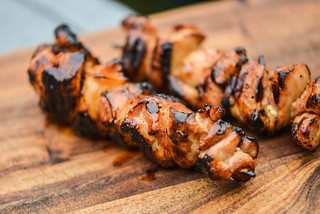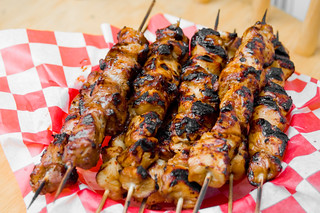Tsukune (Japanese Chicken Meatballs)
A while back I worked on a recipe for Pakistini chicken keema done in kebab form. This required taking a pretty wet ground chicken mixture and getting it to cling to a skewer, which was no easy feat to accomplish. In my tests, chilling the mixture in the freezer for a little while helped things out, making the meat firm enough to at least withstand the short trip from tray to grill, where it became more solid quickly as it cooked over a very hot fire.
From the comments I got, not everyone had success with it, leaving me wondering what a better solution may be. So I decided to go back at it, but this time using tsukune—Japanese chicken meatballs—as the ground chicken recipe of choice to work out my skewering dilemma.
Just because the impetus behind this post was to solve some technical issues didn't mean I was going to let the focus of making a really incredible tsukune slip at all, and for me, a great tsukune is made all the better by an equally delicious tare sauce.
Tare is a general term for a thick Japanese grilling or dipping sweet soy sauce. It's in the same vein as teriyaki, but recipes vary widely as tares are altered to the particular tastes of those cooking them. I used a teriyaki sauce recipe as a starting point to building this tare.
I began with the required components of mirin, soy sauce, sake, and brown sugar, but altered the amounts to bump up the sweetness a bit so that it balanced better with the salty soy sauce. To that I added garlic, scallions, ginger, and white peppercorns, all simmered down in the sauce and strained out at the end. I also added an unexpected ingredient: sherry vinegar. Traditional? No, but its sweet acidity really brightened up what was otherwise a relatively sweet sauce.
With all the ingredients together, I let the mixture go at a rolling simmer until it was reduced down to a thick syrupy consistency, which took around 45 minutes. After straining out the solids, I was left with a complex sauce that married salty and sweet with a depth that I knew would be killer on the tsukune.
Next, I started working on the meatballs. Past experience in other ground chicken products has shown me that chicken thighs are the way to go for the juiciest and most flavorful end product, so I picked up a couple pounds of boneless thighs and ran them through the small die of my meat grinder. This can certainly be done by your butcher, which is preferable to prepackaged ground chicken, since you'll know exactly what you're getting.
Once I had the meat ground, I worked on giving it a mild seasoning. Chicken is a pretty lightly flavored meat, so I didn't want to overwhelm it with too many additions. I started slowly by mixing in small amounts of scallions, minced ginger, minced garlic, salt, and white pepper.
After each addition of seasoning, I broke off a piece of the mixture and cooked it up to taste how things were going. After adjusting everything to be just right, and giving the meat a nutty, toasty undertone by way of sesame oil, it was in great shape to move on to the next step.
It was time to get down to what brought me here in the first place. As a baseline, I made my first two skewers of three 1-inch meatballs each with no additional binders. The meat mixture at this point was very loose and wet, and the meatballs not only didn't cling the skewer, but started to break apart while just resting as I worked on the rest.
For the next batch I mixed in panko breadcrumbs until the chicken firmed up—1/2 cup of breadcrumbs for 1 1/2 pounds of meat. The now sticky and denser mixture rolled into almost perfect spheres that held their shape and stayed on the skewer well.
Continuing down this path, I added in an egg—a pretty ubiquitous binder in many meatball recipes. The ground chicken quickly became wet again, but not loose like it was originally. The meatballs didn't hold the tight round shape the previous batch did, but also didn't break apart. They didn't hold on the skewer as well either, which required me to support the meatballs on the stick with my hand when moving them into a storage container.
Finally, in attempt to get back to that firmer texture, I tried adding cornstarch into the remaining ground chicken. I've seen cornstarch in meatball recipes previously, but never tried it out. After adding in a few tablespoons one at a time, the mixture was not becoming much drier, so I stopped, formed, and skewered the remaining six meatballs, which were more or less the same in consistency as the previous lot.
This time around I didn't freeze the skewered meat, but did let it rest in the fridge for a couple hours while I waited for guests and started the fire. Once the coals were hot and ready, I moved the first batch of tsukune to the grill.
This mixture with no binders remained very loose, and I had to cradle the entire skewer in my hand to keep the meat on the stick. Once on the grill, I thought I was safe as I watched it begin to cook and firm up. As the first side looked well seared, it was time to flip, which resulted in the entire thing just falling apart. I chocked it up to human error and gave it another go, but came out with the same results despite extra care and waiting even longer to turn. With two skewers of tsukune down for the count, I hoped the panko ones would fair much better.
From the get go, they certainly did—staying on the skewer without additional support, turning with no sticking or breaking after being browned on one side, then holding up throughout the rest of the cooking time, including after being brushed with tare right at the end. I thought I had a clear winner already, but the first taste proved otherwise. Despite the awesome appearance, the meat was a bit dry and rubbery, albeit the flavor overall was excellent.
So I turned to the meatballs with egg in them for redemption. These clung to the skewer better than first batch, but not as well as the second, which left me supporting the bottom to keep them from falling off the stick. Once on the grill they browned beautifully and turned without any issues after the first side was well seared. They didn't hold the perfect shape the last ones did, but still retained a presentable meatball definition.
Luckily, the texture issues here were solved—in addition to the gingery and peppery meat and the sweet tare, these were moist and tender. I would give up the slight loss in appearance for the better tasting end product any day.
The final batch with the cornstarch were pretty much identical to the egg and panko alone, leaving me to see no real advantage in working in a third binder or using cornstarch at all.
So there you have it, a combination of egg and panko are the secret to a chicken meatball that grills up on a stick incredibly well—even if it may require a little support to get from one place to another in its raw state. I don't think I could have picked a better background for this test than tsukune, these were so delicious that my guests and I had no problem eating one after another—even the less than perfect ones were still damn tasty.
You Might Also Like
Comments
-
Rose Definitely making these! Yum!
-
Jerry Coleman Looks delicious. I knead my ground chicken so until it becomes sticky and binds and binds together. Also, I use flat skewers-the ground chicken adheres better.
